At the beginning of the food chain for humans and animals are plants. Due to the increasing use of cultivated land for bioenergy production, the yield efficiency of crops is a growing challenge for seed producers and breeders. Optical methods offer excellent opportunities for quality control and optimization in plant breeding and seed production. Two industrially used methods for this purpose developed by Fraunhofer IIS in cooperation with Strube-Dieckmann are briefly described below.
Phenotyping
Computed tomography on foods and plants
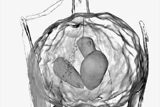
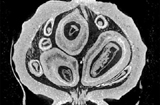
Computed tomography on food and plants
Computed tomography (CT) offers the possibility of visualizing the internal structure of objects non-destructively and without contact. The Fraunhofer Development Center X-ray Technology's diverse portfolio ranges from mobile computed tomography to systems that can be integrated into the production line and high-energy methods. With time-resolved CT (4D-CT), we are also able to fully visualize and analyze motion sequences that occur hidden inside objects. We use computed tomography both for the reconstruction of individual layers (2D) and for the reconstruction of complete volumes (3D).
Food
Computed tomography (CT) has become increasingly important in recent years as a non-destructive 3D inspection technique in industry and is already used with great success in medicine, geology, biology and materials research. Now this technique is also gaining popularity in the food sector as a useful method in examining the microstructure of food products.
The use of CT to visualize plants or plant parts and evaluate the growth process opens up many new possibilities. Thus, it is possible to study roots, seeds, fruits, leaves and branches without interrupting the growth process. This approach opens up new possibilities in phenotyping, as time-resolved measurements can be performed on one and the same plant.
3-Dimensional Measurement of Plants for the Evaluation of Seed Qualities
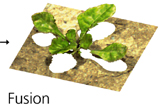
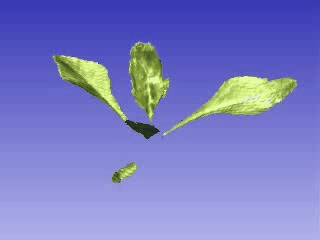
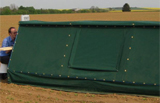
For important decisions in breeding and seed production, objective methods for evaluating plant growth are also needed. These are intended to supplement the conventional subjective assessment. For this purpose, optical measurement technology can be used in combination with image processing directly on the trial field.
In a mobile measuring system developed by Fraunhofer IIS in cooperation with Strube GmbH & Co. KG, high-resolution (0.3mm)³ plants are measured three-dimensionally in the field using laser light-sectioning and recorded with a color camera. The 3D data is then fused with the color data. Using image processing, the leaf area is now determined fully automatically, independently of the leaf position for beet plants.
On this basis, the characteristics growth stage at a certain point in time and leaf area can be determined objectively. Furthermore, the homogeneity of the field emergence is determined as an important quality criterion. The individual plants can be viewed three-dimensionally on a monitor from all sides in natural colors. This allows a visual assessment by experts and a detailed and direct comparison of plants of different locations and genetics.
The metric determination of further morphological characteristics from the measurement data specifically tailored to the requirements of breeders is also possible, as is adaptation of the system to other crops.
* The 3-D plant scanner is designed to be portable so that measurements can be taken in the field, regardless of the weather, without damaging the soil. This system can measure 1500 beet plants per day in three dimensions.
 Fraunhofer Agriculture and Food Industry Alliance
Fraunhofer Agriculture and Food Industry Alliance